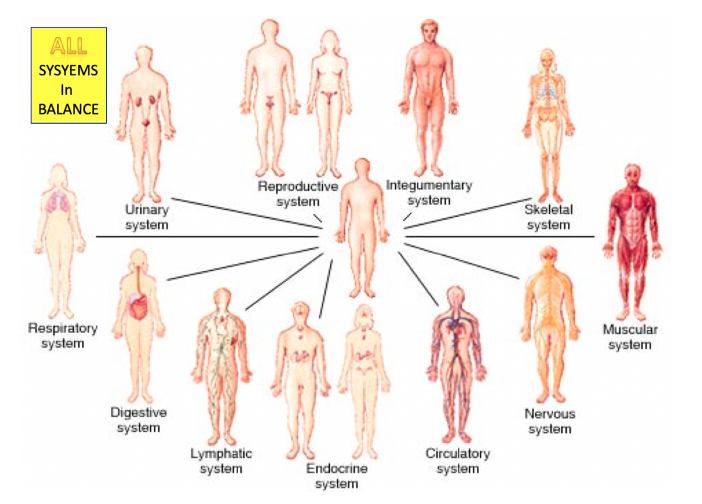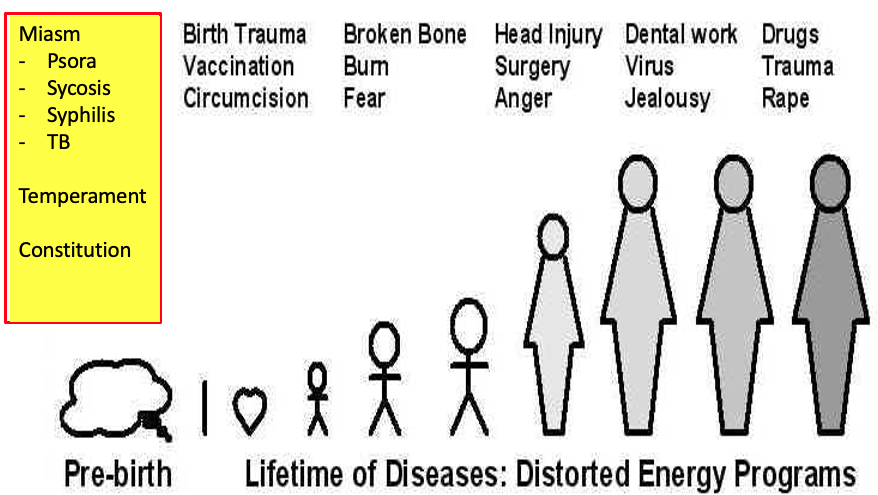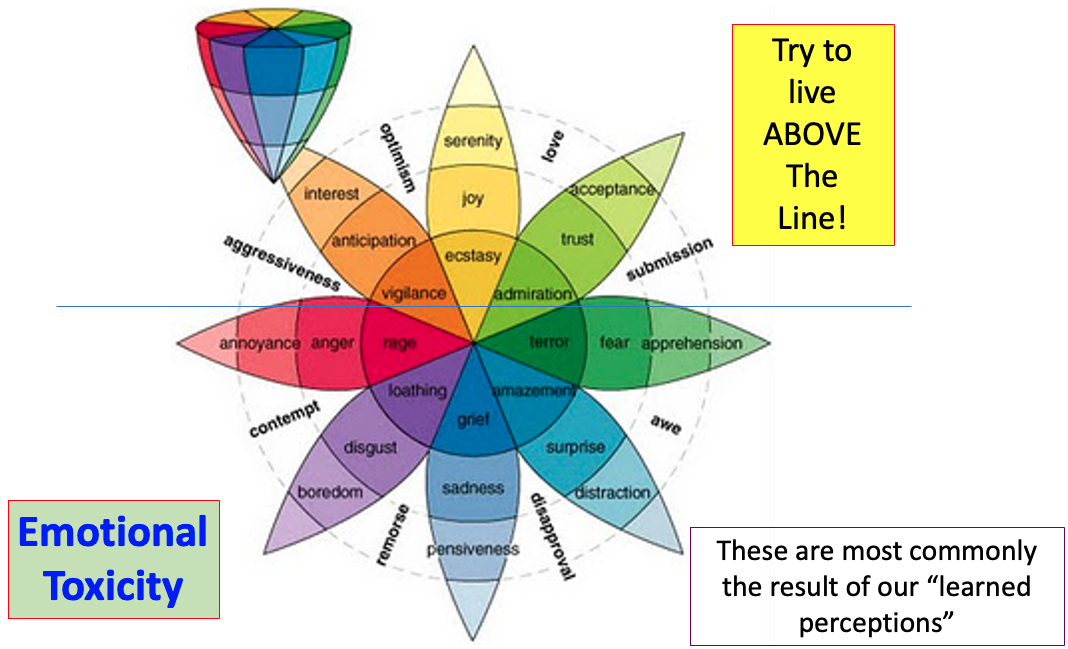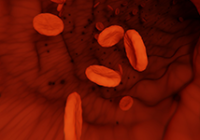The following is an excerpt from the short book, Basic Treatment Guidelines: a.k.a. Natural Laws to Live By, by Dr. Dickson Thom, DDS, ND, copyright 2019.
Health is much more than the absence of disease. It is a goal that needs daily effort to achieve. The body is a remarkable regulatory machine that will correct imbalances and pathologies provided it has the raw materials and time. One of the most common obstacles the body must overcome to regain balance (homeostasis) is the removal of the endogenous and exogenous toxins that it is exposed to daily.
The Basic Treatment Guidelines (BTG’s), as I call them, are a series of activities and supplements designed to provide the body with support to return itself to the state of health. They evolved and were updated continually over the last 30 years as I evaluated the clinical results in my patients and from the historical Natural Laws of Nature.
The discussion on some of its components (sunshine, play time, breathing, water, movement, hydrotherapy, water, dry skin brushing, castor oil, sleep hygiene, apple cider vinegar, diet, essential fatty acids, probiotics, various vitamins, phytosterols) will provide insight into why the program works so efficiently at aiding the body in achieving and then maintaining optimal health and performance. To adequately understand how these guidelines work, a brief discussion about toxins is necessary.
But first thing’s first. What is health?
According to the World Health Organization in 1948, health is: “a state of complete physical, mental and social well-being and not merely the absence of disease or infirmity”. When we look at health from a biological mindset, one must consider health a basic and dynamic force in our daily lives, influenced by our circumstances, beliefs, culture and social, economic and physical environments.
One’s health goal should not simply be to be healthy (which means living well despite inescapable illnesses and diseases) but rather every day to be able to say you are at your optimal performance. This is the balance and integration of physical, intellectual, emotional, and social aspects of the human condition.
The seven dimensions associated with optimal performance that need to be considered are:
- Spiritual
- Intellectual
- Emotional
- Social
- Environmental
- Occupational
- Physical
All that said, health is a state of homeostasis (balance) on ALL these seven levels.
But what is homeostasis? The word was coined by the Father of Physiology, Dr. Claude Bernard (1813-1878) when he wrote, “All the vital mechanisms, varied as they are, have only one object, that of preserving constant the conditions of life in the internal environment.”
In order to accomplish this, the body has MANY systems that work as a complicated, interactive team. A few of the internal components to create and maintain homeostasis are:
- The ideal concentration of oxygen and carbon dioxide.
- The ideal pH of the internal environment.
- Ensuring the correct concentration of nutrients and waste products.
- The correct concentration of salt and other electrolytes.
- The correct volume of fluid inside and outside the cell.
Maintaining all the thousands of processes and reactions in the body that happen every second of our life is not something that just happens by itself and “hoping” it will be ok. After all, one’s health is a life-long journey and not a must-do 12-week plan.
So, the balance of the body is a continual balance of physics, biology and physiology, combined with the spiritual.
Then why do we get ill?
IMAGE 1

Typically, in medicine the belief is based on mechanistic causes in nature that can be potentially understood and cured by the application of the scientific method. They include:
- Organic breakdown or deterioration (e.g., tooth decay, heart failure, senility).
- Obstruction (e.g., kidney stones, arterial blockage due to plaque build-up).
- Injury (e.g., broken bones, bullet wounds).
- Imbalance (e.g., too much or too little of specific hormones and salts in the blood).
- Malnutrition (e.g., too much or too little food, not enough proteins, vitamins, or minerals).
- Microbes (e.g., bacteria, viruses, fungi, amoebas, worms).
- Toxins.
- Stress.
- Lifestyle (lack of exercise, smoking, lack of sleep, etc.).
But from a biological perspective, are these the real causes or just triggers?
Perhaps closer to the real causes are:
- Emotional imbalances creating chakra-energy disturbances (especially chronic anger, hatred, bitterness, greed, hopelessness, loneliness, and depression which can create a “weak” link.)
- Disturbances in the mental and emotional bodies can result in eventual physical manifestation of “disease”.
- Meridian imbalances (as in the theory of Chinese medicine).
- Imbalances in a person’s miasm, temperament, constitution (known as their terrain).
IMAGE 2

But the “real cause” is the violation of nature’s laws.
And so, what are some of nature’s laws in regards to health?
In 1882, Dr Felix Oswald, MD, wrote as part of “Physical Education: The Health-Laws of Nature,” (New York: D. Appleton and Company) that, “Diet, in-door life, out-door life, gymnastics, clothing, sleep, recreation, [and] hygiene,” are laws of nature.
And then over a century ago in Nature Cure by Henry Lindlahr (The Nature Cure Publishing Co., 1914, Chicago), wrote, “Chronic disease is the number one cause of death of our patients. The primary cause of disease is Violation of Nature’s Laws such as excessive eating, too much alcohol, coffee, tea, overwork, night work, fear, worry, poor air quality, lack of exercise, [and] loveless marriages.”
And so now in the 21st century, nothing has really changed despite billions of dollars in research seeking a “magic bullet” to cure everything from Lyme disease, to heart disease, to cancer, to depression to diabetes, etc.
But we realize that all people have the same basic needs, however each person’s response and reactions to those needs are influenced by the culture with which the person identifies.
- People meet their own needs relative to their own priorities.
- Although basic needs generally must be met, some needs can be deferred.
- Failure to meet needs results in one or more homeostatic imbalances, which eventually will result in illness.
- A need can make itself felt by either external or internal stimuli.
- A person who perceives a need can respond in several ways to meet it.
- Needs are interrelated.
Abraham Maslow, The Farther Reaches of Human Nature, p. 186, wrote, “Man is a hierarchy of needs, with the biological needs at the base of the hierarchy and the spiritual needs at the top.”
So why are these basic needs so essential to every human on the planet?
Simple (not really)! The GREATEST CHALLENGE that our PHYSIOLOGY FACES is the EFFECTIVE MANAGEMENT of TOXINS (physical, mental and emotional).
But what are toxins from the perspective of the body? The word “toxin” comes from the Greek “toxikon” which means “arrow poison” and was introduced to medicine in 1888 by the Berlin physician Ludwig Brieger (1849-1909) as a name for poisons made by infectious agents. (MedicineNet.com)
Merriam-Webster dictionary states that a toxin is: “a poisonous substance that is a specific product of the metabolic activities of a living organism and is usually very unstable, notably toxic when introduced into the tissues, and typically capable of inducing antibody formation.”
We must consider that toxins include:
- Natural – endogenous
- from cellular metabolism
- Xenobiotic – exogenous
- recognized by body and managed by enhancing cellular metabolism
- not recognized (such as heavy metals, pesticides, etc.) and more difficult to manage
- emotional – over stimulus
- mental – dogma, loss of free will and expression
- “learned perceptions”
There are SO many potential toxic contributors. A brief list would include:
- Toxic food storage
- Pesticides, herbicides, and fungicides
- Toxic, air, water, and soil pollution
- Toxic heavy metals (e.g. mercury, lead, and aluminum – all very toxic even in only tiny amounts): taken in through food we eat, such as fish; water we drink; our environment; anti-perspirants; medical vaccines
- Exposure to cigarette smoke – 1st, 2nd and 3rd hand
- Recreational and prescription drugs including child and adult vaccinations
- Toxic cosmetics, perfumes, and personal “care” products
- Toxic solvents and cleaning products
- PCB’s (polychlorinated biphenyls): in plastics, paints, varnishes, inks, wood preservatives and pesticides
- Dioxins and other organochlorides: in plastics, paper, packaging, pesticides, drinking/breathing heated
- Chlorinated water (e.g. your shower!)
- Formaldehydes: In timber products, rubber, paint and plastics
- PAH’s (Polycyclic aromatic hydrocarbons): Cigarette smoke, air pollution, and charcoaled meats (BBQ)
- Eating low/depleted nutrient natural foods (e.g. commercially mass produced, artificially fertilized, poor soil, non-seasonal, prematurely picked, transported, and stored)
- Lack of supportive relationships and social connectedness
- Lack of exercise/activity
But we must also remember that toxins are NOT just for a “physical” substance but likely the most harmful toxins in regard to health are emotional toxins.
IMAGE 3

The life cycle of a toxin begins as it enters the body (exogenous) or is made within the body by cellular metabolism (endogenous) and circulates in the bloodstream. The liver (the body’s “filter”) has a critical role in breaking down the toxin for efficient elimination. When the body is functioning optimally, the primary organs of elimination, called emunctories, include the lungs, skin, kidneys, intestines and nervous system (brain) work quickly to excrete it from the body.
If any of the organ systems are not functioning optimally, that is, not in a place of homeostasis, they are unable to efficiently and completely eliminate the daily toxins, resulting in the deposition of the toxin until (and if) it can be eliminated at a future time. The reservoir for these “shelved” toxins is the connective tissue that comprises every organ in the body. The weakest organ will be selected for the storage because that organ will “complain” the least.
The strategy of placing the toxins in various reservoirs is brilliant if the toxic load decreases enough to allow the body to process the “back-order” of toxins and clear the connective tissue. However, if the eliminatory organs continue to be overwhelmed, the body looks for more storage receptacles. The cell is the next suitable container.
The danger is the cell, unlike the connective tissue, contains very sensitive enzyme systems that become disrupted with the foreign material. The eventual result is decreased cellular functioning and alterations in the DNA. As the cells replicate with the altered DNA, they are programmed with the genetic alterations from the previous cellular disruptions.
Considering the cycle, there are different areas that can be targeted to optimize the body’s ability to deal with everyday toxins. First, reduce the initial toxic load by eating organically much as is feasible, drinking pure water, not smoking, daily body movement, etc. Second, remove the toxins that have accumulated in the body.
There are three areas one can concentrate on to influence the removal of toxins from the body:
- The cells
- The connective tissue
- The interstitial fluid; the fluid medium surrounding every cell in the body.
The cells and the connective tissue are the actual storage receptacles. The interstitial fluid is the “garbage truck” that drops the toxins off, and hopefully, picks them back up when the body has time to remove them. However, if the load on the eliminatory organs is too great, eventually even this fluid becomes too saturated to remove any of the toxins from the tissues or cells. It is a concentration gradient. If fewer toxins are present outside of the cells, then the toxins can flow from the interior of the cell to the external environment.
The opposite occurred initially when the toxins in the interstitial fluid were moved to be stored in the cells. However, if the interstitial fluid is full of debris and toxins, the cell will be unable to remove its toxins and stagnation results in the system. This stagnation leads not only to less waste leaving the cell but also fewer nutrients arriving for cellular uptake.
To visualize this predicament, imagine taking a bath in the same water every day. Your body is a single cell, and the water in the tub is the interstitial fluid. For the first couple of days, the water will be clean enough to enable dirt to leave your body. However, after time, the water in the tub will become so saturated with dirt, that you’ll probably be dirtier when you leave than before you began.
A portion of the BTG’s (lymphatic massage and castor oil) work by opening the drain to the tub. Another BTG, drinking water, introduces clean water in to the tub. Combining these will leave the cell with an environment that is ready to accept nutrients and dispose of the toxins.
As discussed previously, other components of the BTG’s: probiotics, flax seeds, evening primrose oil, and apple cider vinegar, work to re-establish the balance that daily toxicity and a stressful lifestyle had disrupted. It will become evident that all of the modalities of the BTG’s have multiple roles in aiding the body to return and then to maintain health. It’s important to remember that detoxification isn’t like a light switch. It is best done over time to allow the body to adjust and make the corrections necessary to dispose of the toxins while still performing its other many functions.
Please join Dr. Thom on January 2nd at 12:00 ET for a very special BioBites as he kicks off the Marion Institute’s 3rd Annual 21-Day Reset!












This Post Has One Comment